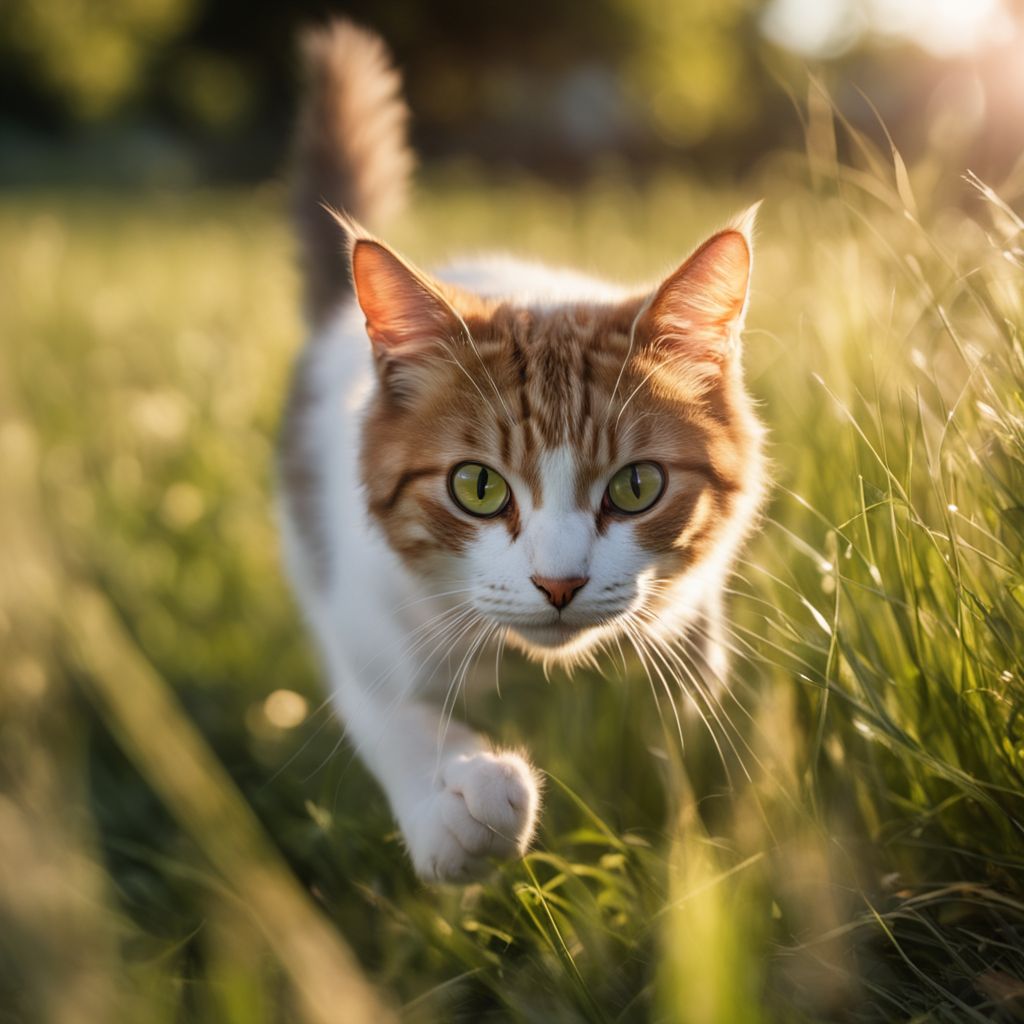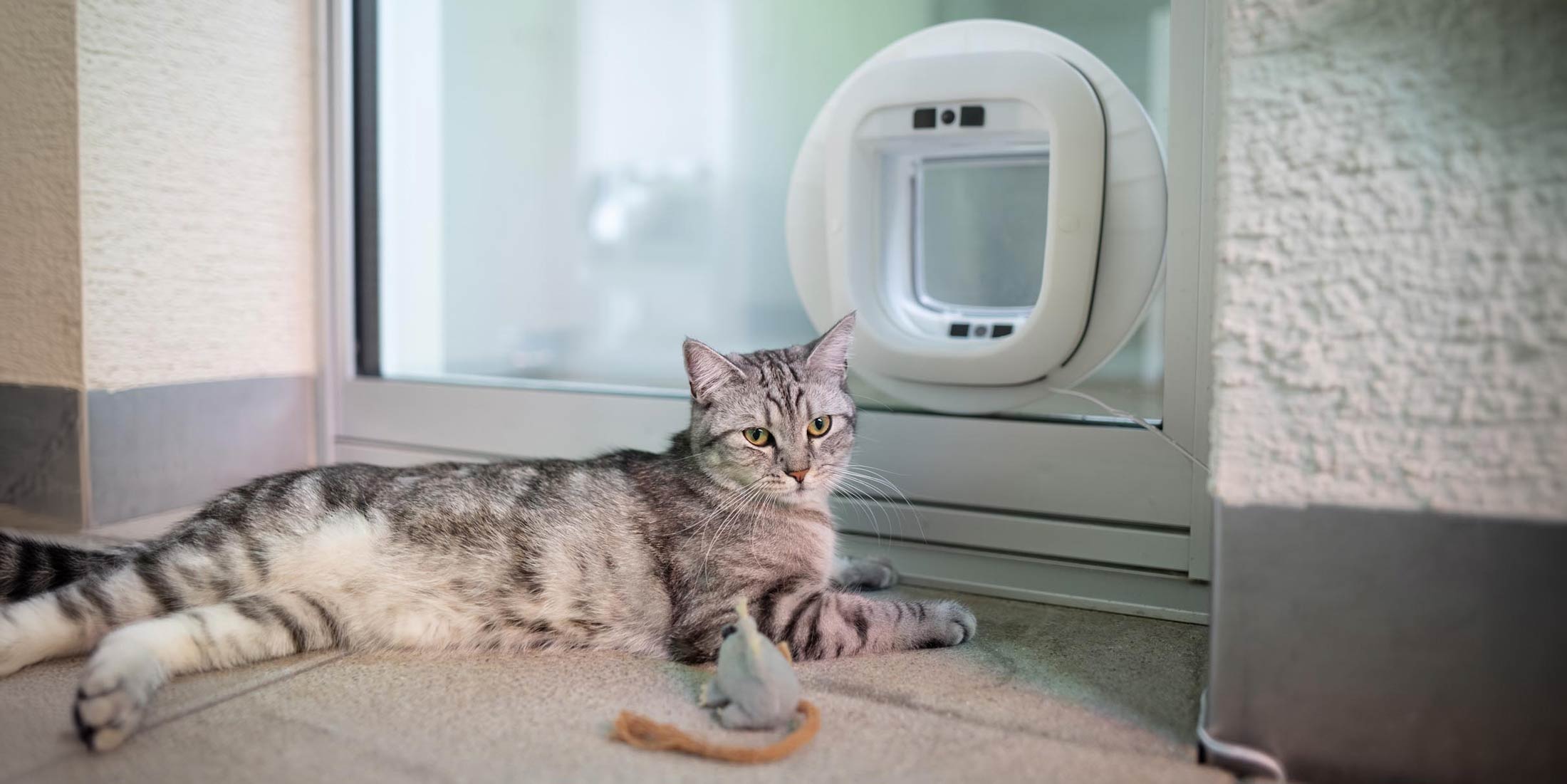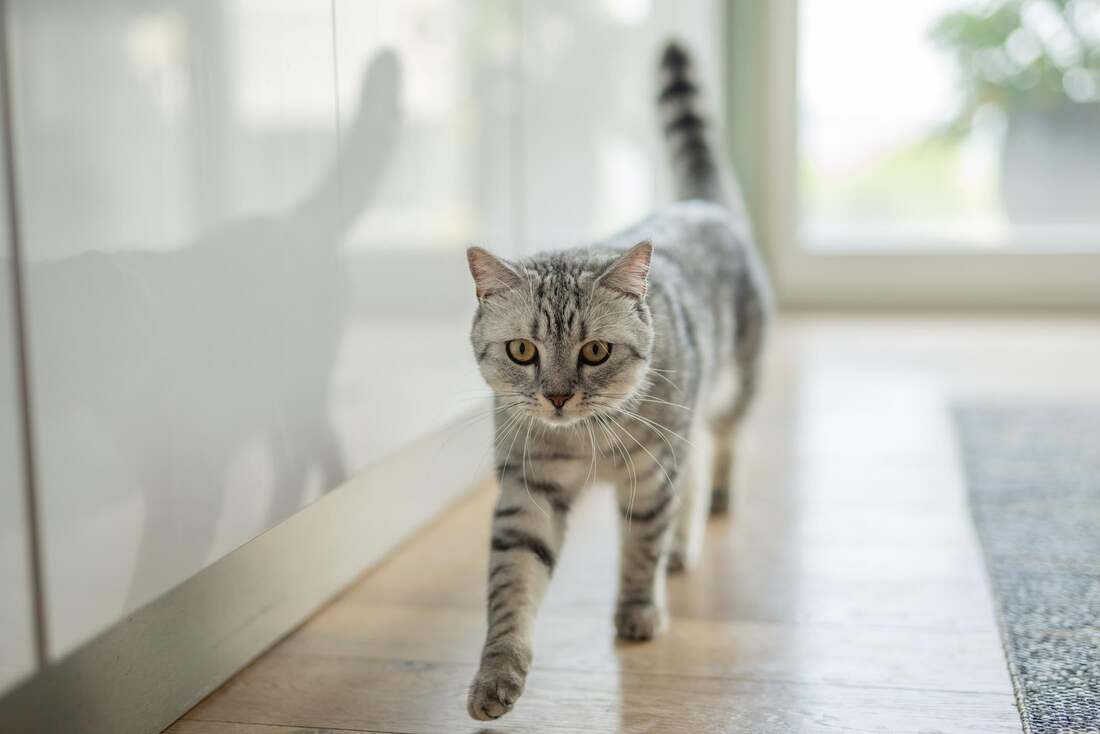Have you ever wondered what goes on in your cat's mind when he hunts?
Although it can sometimes be perceived as annoying, hunting behavior is a deep-rooted instinct that is of great importance to cats.
Cats hunt out of instinct and survival mechanisms, using various strategies such as lurking, stalking and the final leap.
In this article, we delve deep into the world of cat hunting behavior, explain why they hunt, introduce their hunting strategies, and discuss how we as owners can understand and positively influence this natural behavior.
Why do cats hunt? Insight into hunting behavior
Cats are not only cute pets, but they are also born hunters . Their hunting behavior is a deep-rooted part of their nature that goes far beyond the simple need for food. It is an innate instinct found in both wild and domesticated cats. This hunting drive has evolved over generations to ensure survival. Although our domestic cats are fed regularly and do not need to hunt to survive, the urge to hunt remains a central aspect of their behavior.
So why do cats hunt when they are not hungry? The answer lies in their genetic roots . - Cats hunt for various reasons:
- For fun and to pass the time.
- To sharpen and maintain their hunting skills .
- As part of their natural instinct , hardwired into their brain. Even simply observing a potential prey or playing with toys that imitate prey can trigger this instinct. It shows that hunting behavior is an indispensable part of cats' lives that supports their well-being and natural needs.
Hunting Strategies of the Cat: From Observation to Catch
Cats are master hunters who use a variety of strategies and techniques to catch their prey. They start with careful observation and lurking, where they wait patiently for the perfect moment. Stalking is another crucial step in their hunting repertoire, using any cover they can find to approach the prey unnoticed. This approach requires a high level of concentration and skill, as the cat keeps a close eye on the prey's every move while adjusting its own position to get as close as possible without being detected.
The final jump is the climax of the hunt, in which the cat uses all its energy and speed. - The cat:
- Stretches the tail straight back,
- Rushes forward , with the hind legs coming up first to catch the momentum,
- Grabs the prey with the front paws and additionally fixes it with the teeth. This moment is crucial because the cat must react to possible evasive movements of the prey during the jump and adjust its direction accordingly. The successful catch is the result of a perfect combination of patience, precision and timing, characteristics that make cats effective hunters.
Play instinct and hunting behavior: Why playing is important
Cats are not only cuddly companions, but also skilled hunters. Their play instinct is closely linked to hunting behavior. When cats play, they are actually training their hunting skills. Playing helps them to strengthen their muscles, tendons and bones, which is essential for catching prey in nature. Young cats play a lot in order to perfect their movements. But adult cats also retain this play instinct, which is a vital part of their hunting instinct.
Cats' play behavior often mimics hunting. They stalk toys, sneak up on them, and make the final leap, just as if they were catching real prey. These activities are not only entertaining, but also necessary to keep the hunting instinct alive. - Cats play for a variety of reasons :
- To practice and improve their hunting skills.
- For mental stimulation and to avoid boredom.
- As an expression of their natural instinct , playing is an essential part of a cat's life, promoting their well-being and keeping them in shape.
Prey Play: A Natural Part of the Hunting Instinct
Playing with prey is an essential part of cats' hunting behavior. This behavior is not only for fun, but also to practice and perfect their hunting skills. By throwing their prey around and catching it, cats sharpen their reaction time and improve their coordination. This behavior can be observed in both indoor and outdoor cats and shows how deeply the hunting instinct is embedded in cats' genes. It is a natural instinct that helps them prepare for real hunting situations.
The chattering of the cat: an expression of the hunting instinct
The chattering or chittering of cats, especially when they see birds, is a fascinating expression of their hunting instinct. This sound is made by cats when they see prey that they would like to catch but cannot reach. Chattering may be an outlet for the excitement and frustration the cat feels at not being able to hunt the prey. There are theories that this behavior also represents practice for the killing bite or even an attempt to lull the prey into a false sense of security. But regardless of the exact meaning, chattering shows how deeply rooted the hunting instinct is in cats.
Why Cats Bring Their Prey Home
Cats bring their prey home for a variety of reasons that are deeply rooted in their instincts. One of the main reasons is that they want to eat in a safe environment. Cats feel safe at home and want to enjoy their prey without being disturbed. It is also a sign of their trust in their owners, as they see their home as a shared, safe place. This behavior can also be attributed to them wanting to practice and maintain their hunting skills, even if they are fed regularly.
Another reason cats bring their prey home is the need to strengthen their social bonds and show that they can provide for their family. - Cats show :
- That they are capable hunters and can contribute to the common good.
- Their affection and care by sharing what they consider valuable.
- That they see their humans as part of their social structure and want to share their successes with them. Although it can sometimes be unpleasant for us humans to receive dead mice or other small mammals, for cats it is an important form of communication and expression of their natural instincts.
Methods to stop cats from hunting
It is not an easy task to stop a cat from hunting, as it is deeply rooted in their instinct. But there are methods that can help to satisfy your cat's hunting instinct in other ways. One effective method is to play with your cat regularly to live out their hunting instinct in a controlled environment. Toys that simulate hunting and catching, such as laser pointers or fishing rods, can be particularly helpful. This way, the natural instinct is used without harming small animals.
Another method is to provide interactive toys that the cat can play on its own. These include toys that move unpredictably or toys that release treats when manipulated in a certain way. These types of toys can hold your cat's attention for longer periods of time and distract its focus from hunting outdoor animals. It is important that you, as the owner, actively participate and regularly provide your cat with new challenges and games to avoid boredom and the associated hunting behavior.
Health Risks of Hunting: What Cat Owners Should Know
Hunting is not only an instinct, but also poses health risks for cats. When catching prey such as mice or birds, they can not only injure themselves, but also contract diseases . Some of the dangers are:
- Injuries from fighting with prey
- infection with parasites or diseases of the prey
In addition to the direct risks for the cat itself, hunting can also pose dangers for humans . Diseases that can be transmitted from cats to humans are called zoonoses. These include, for example:
- Toxoplasmosis, especially dangerous for pregnant women
- Diseases caused by parasites that the cat brings back from its prey
How Flappie helps keep your home prey-free
Flappie offers a simple and effective solution to keep your home free of prey. The intelligent cat flap detects whether your cat is bringing prey and then prevents it from entering. This ensures a clean home without you having to deny your cat access to the outdoors. The advantages of Flappie are:
- Selective access control prevents cats from entering with prey.
- Prey detection through AI-controlled camera helps keep unwanted guests out.
Installing the Flappie cat flap is a small step for you, but a big step for the cleanliness of your home. With the accompanying app, you can adjust the settings and receive notifications when your cat tries to come home with prey. It's time to try Flappie and experience the benefits for yourself:
- Remote control of the cat flap via the Flappie app.
- Push notifications inform you immediately about your cat’s behavior.
Frequently Asked Questions
How does the cat behave when hunting?
When hunting, cats behave strategically and patiently. They begin by carefully observing and lurking to find the perfect moment to attack. They then sneak up on their prey unnoticed, taking advantage of every possible cover. The final leap is the climax of the hunt, in which the cat uses all its energy and speed to grab the prey with its front paws and also to hold it in place with its teeth.
What kind of hunter is the cat?
The cat is a natural hunter with a deep-rooted hunting instinct that is found in both wild and domesticated cats. Their hunting behavior goes far beyond the simple need for food and is an innate instinct developed over generations to ensure survival. Cats hunt for a variety of reasons, including for fun, to practice their hunting skills, and as part of their natural instinct.
How does the cat catch its prey?
The cat catches its prey through a combination of patience, precision and timing. After carefully observing and lurking, it approaches the prey by stalking it, using every possible cover. At the decisive moment, it makes its final leap, stretches its tail straight back, darts forward and grabs the prey with its front paws while also securing it with its teeth. During the leap, the cat must react to possible evasive movements of the prey and adjust its direction accordingly.





Share:
Cats and Mice – A Dangerous Meal?
Castrating a tomcat: The ideal age